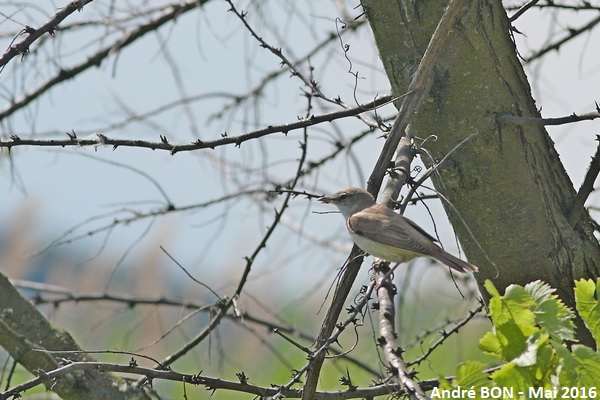

| Great Reed Warbler (Acrocephalus arundinaceus (Linnaeus 1758)) |


|
|
Scientific name: Acrocephalus arundinaceus (Linnaeus 1758) Common name: Great Reed Warbler French name: Rousserolle turdoïde, Rossignol des rivières. Order: Passeriformes Family: Acrocephalidae Size: Body size: 16 to 20 cm; Weight: 25 to 35 g; Wingspan: 28 cm. Habitat: Reed beds and high vegetation bordering rivers, lakes, ponds and marshes. Food: Larvae, insects and spiders caught while moving thru the reeds and also some small fishes or amphibians in addition. Nesting: The bulky nest is suspended above water, attached to reed stems. There is a single clutch of 4-6 eggs per year. Migration: European populations migrate to sub-Saharan Africa and as far as South Africa in winter. Geographic area: Europe north to southern Scandinavia, missing in the British Isles, North Africa, temperate Asia east to China. |
Great Reed Warblers resemble Eurasian Reed Warblers (Acrocephalus scirpaceus) except in size which is clearly larger. The upper parts are uniform dark olive brown. The rump is red. The underside is off-white and the flanks show a light buff tinge. The bill is strong with a dark tip. There is a broad pale eyebrow. |
| [To know more about the Great Reed Warbler] [Next picture] [Top] |

|
The large size, the strong bill, the pale eyebrow (not very visible on this picture) lead to the Great Reed Warbler species. You can hear very loud songs in the reed bed bordering the nearby small body of water, remains of a volcanic crater. |
| [To know more about the Great Reed Warbler] [Previous picture] [Top] |

|
We are only in May, German tourists are not yet numerous enough to mask the songs of Great Reed Warblers which activate in the reed beds bordering Lake Balaton. This is a rather slow and repetitive song with raspy patterns followed by higher pitches. |